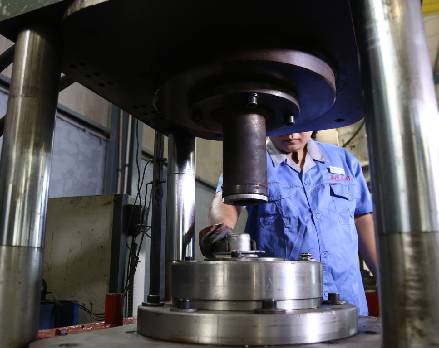 Afrikaans
Afrikaans  Albanian
Albanian  Amharic
Amharic  Arabic
Arabic  Armenian
Armenian  Azerbaijani
Azerbaijani  Basque
Basque  Belarusian
Belarusian  Bengali
Bengali  Bosnian
Bosnian  Bulgarian
Bulgarian  Catalan
Catalan  Cebuano
Cebuano  Corsican
Corsican  Croatian
Croatian  Czech
Czech  Danish
Danish  Dutch
Dutch  English
English  Esperanto
Esperanto  Estonian
Estonian  Finnish
Finnish  French
French  Frisian
Frisian  Galician
Galician  Georgian
Georgian  German
German  Greek
Greek  Gujarati
Gujarati  Haitian Creole
Haitian Creole  hausa
hausa  hawaiian
hawaiian  Hebrew
Hebrew  Hindi
Hindi  Miao
Miao  Hungarian
Hungarian  Icelandic
Icelandic  igbo
igbo  Indonesian
Indonesian  irish
irish  Italian
Italian  Japanese
Japanese  Javanese
Javanese  Kannada
Kannada  kazakh
kazakh  Khmer
Khmer  Rwandese
Rwandese  Korean
Korean  Kurdish
Kurdish  Kyrgyz
Kyrgyz  Lao
Lao  Latin
Latin  Latvian
Latvian  Lithuanian
Lithuanian  Luxembourgish
Luxembourgish  Macedonian
Macedonian  Malgashi
Malgashi  Malay
Malay  Malayalam
Malayalam  Maltese
Maltese  Maori
Maori  Marathi
Marathi  Mongolian
Mongolian  Myanmar
Myanmar  Nepali
Nepali  Norwegian
Norwegian  Norwegian
Norwegian  Occitan
Occitan  Pashto
Pashto  Persian
Persian  Polish
Polish  Portuguese
Portuguese  Punjabi
Punjabi  Romanian
Romanian  Russian
Russian  Samoan
Samoan  Scottish Gaelic
Scottish Gaelic  Serbian
Serbian  Sesotho
Sesotho  Shona
Shona  Sindhi
Sindhi  Sinhala
Sinhala  Slovak
Slovak  Slovenian
Slovenian  Somali
Somali  Spanish
Spanish  Sundanese
Sundanese  Swahili
Swahili  Swedish
Swedish  Tagalog
Tagalog  Tajik
Tajik  Tamil
Tamil  Tatar
Tatar  Telugu
Telugu  Thai
Thai  Turkish
Turkish  Turkmen
Turkmen  Ukrainian
Ukrainian  Urdu
Urdu  Uighur
Uighur  Uzbek
Uzbek  Vietnamese
Vietnamese  Welsh
Welsh  Bantu
Bantu  Yiddish
Yiddish  Yoruba
Yoruba  Zulu
Zulu Designing a Spiral Wing Pulley for Enhanced Performance and Efficiency in Mechanical Systems
The Design and Functionality of Spiral Wing Pulleys
In the realm of mechanical engineering, the development of innovative components plays a crucial role in enhancing the efficiency and performance of various machines. Among these notable inventions is the spiral wing pulley, a device that has gained attention for its unique design and functional advantages in several applications.
Understanding the Basics What is a Spiral Wing Pulley?
A spiral wing pulley is a type of pulley that features wing-like extensions spiraling around its circumference. These wings are designed to optimize the pulley’s interaction with the driving belt or cable, improving traction and minimizing slippage. The spiral design serves multiple purposes, including reducing air resistance, distributing force more evenly, and facilitating smoother motion, which is essential in high-speed applications.
The Engineering Behind the Spiral Design
The spiral design of the wings contributes significantly to the pulley’s overall functionality. By angling the wings in a spiral fashion, the pulley can effectively channel the forces exerted by the belt or cable. This allows for a larger contact area, which enhances grip and reduces wear and tear on both the pulley and the belt. The shape of the wings also helps in managing tension across the system, providing a consistent transfer of power, which is crucial in applications where precision is key.
Materials used in the construction of spiral wing pulleys are equally important. Typically, high-strength alloys or composites are employed to ensure durability and resistance to environmental factors, such as corrosion or temperature changes. The choice of material can greatly affect the pulley’s weight, which in turn influences the overall efficiency of the system it operates within.
Applications of Spiral Wing Pulleys
Spiral wing pulleys find applications in various industries, including automotive, aerospace, and manufacturing. In the automotive sector, they are often utilized in belt drive systems where efficient power transfer is crucial for engine performance. Their ability to maintain grip under varying loads contributes to the overall reliability of the vehicle.
spiral wing pulley

In aerospace applications, where weight and efficiency are paramount, spiral wing pulleys can be found in control systems and mechanisms that require precise movement. Their aerodynamic properties minimize drag, contributing to improved fuel efficiency and enhanced performance of aircraft.
Manufacturing processes also benefit from spiral wing pulleys. They are commonly used in conveyor systems, where the ability to manage tension and optimize power transfer improves operational efficiency. The consistent performance of these pulleys translates to smoother production lines and reduced downtime, which can lead to significant cost savings for manufacturers.
Advantages of Spiral Wing Pulleys
The advantages of using spiral wing pulleys are manifold. Firstly, their design leads to improved friction and grip, allowing for better performance under load. This is particularly beneficial in dynamic systems where variables such as speed and torque can change rapidly.
Secondly, the spiral wing configuration aids in reducing vibrations, which can have detrimental effects on machinery over time. By minimizing these vibrations, spiral wing pulleys contribute to a longer lifespan for both the pulley and associated components.
Lastly, the unique design often allows for more compact configurations, enabling engineers to optimize space within machinery without sacrificing performance. This is particularly important in modern engineering practice, where space constraints are a common challenge.
Conclusion
In conclusion, the spiral wing pulley represents a significant advancement in pulley design and functionality. Its unique spiral wing configuration delivers improved grip, reduced wear, and optimized power transfer, making it an invaluable component across various industries. As engineering continues to evolve, the importance of innovative designs like the spiral wing pulley will become increasingly evident, driving further advancements in mechanical efficiency and performance. Engineers and designers should continue to explore the potential of such innovative components as they seek to enhance the capabilities of modern machinery and systems.
-
Revolutionizing Conveyor Reliability with Advanced Rubber Lagging PulleysNewsJul.22,2025
-
Powering Precision and Durability with Expert Manufacturers of Conveyor ComponentsNewsJul.22,2025
-
Optimizing Conveyor Systems with Advanced Conveyor AccessoriesNewsJul.22,2025
-
Maximize Conveyor Efficiency with Quality Conveyor Idler PulleysNewsJul.22,2025
-
Future-Proof Your Conveyor System with High-Performance Polyurethane RollerNewsJul.22,2025
-
Driving Efficiency Forward with Quality Idlers and RollersNewsJul.22,2025





























